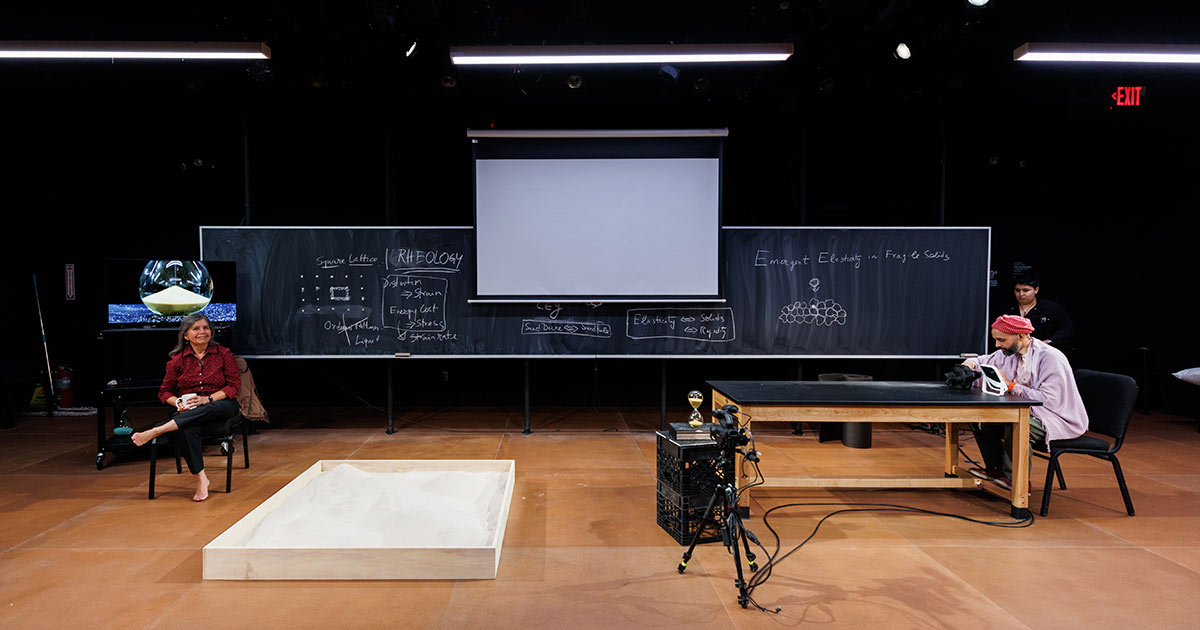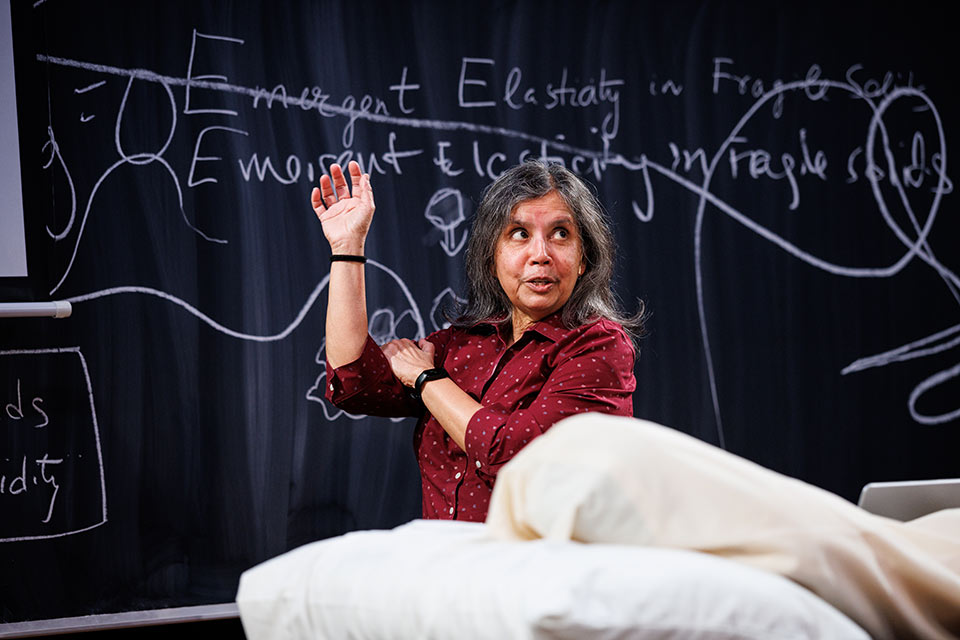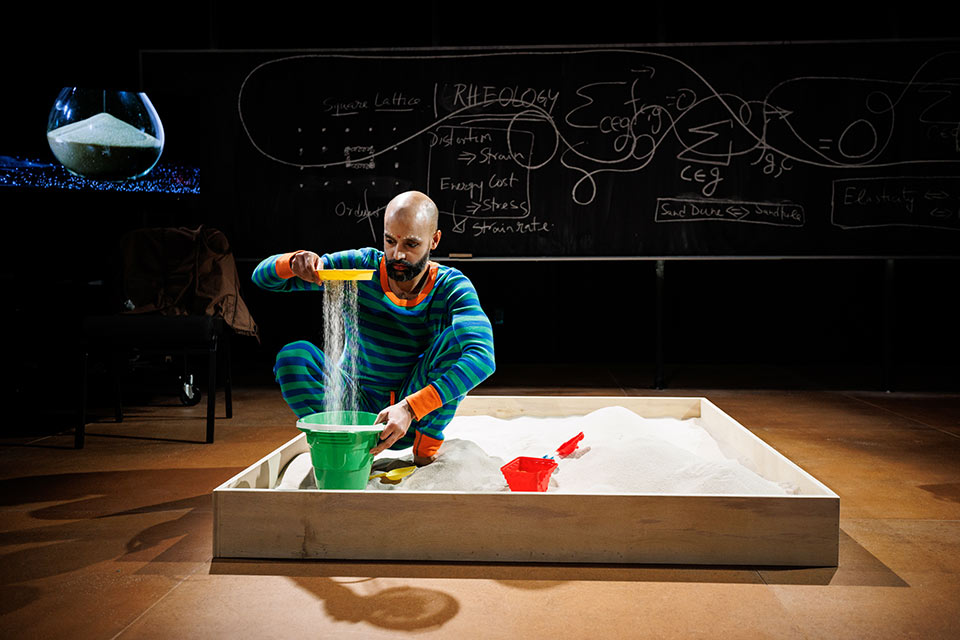Life, death, love and loss: This play gets into the nitty-gritty

Photo Credit: Maria Baranova
By Laura Gardner
May 7, 2025
Avalanches. Sand. Grain silos. These are just some of the phenomena that Bulbul Chakraborty, the Enid and Nate Ancell Professor of Physics, has devoted her career to exploring over 36 years as a theoretical physicist at Brandeis.
What makes sand hold its shape — or not? What forces can unjam a jammed grain silo? Chakraborty is interested in “systems far from equilibrium,” a theoretical quest whose main tools are pencil and paper — lots of paper. Her search is deep and vast: nothing less than the construction of a comprehensive theory that rigorously describes the collective behavior of granular materials, like sand, which physicists call “fragile matter.”
Chakraborty is a theorist, but her son, Shayok Misha Chowdhury, is an experimentalist in his own field: theater. An award-winning playwright and director, his recent play, “Public Obscenities,” was one of three finalists for the 2024 Pulitzer Prize in Drama.
Mother and son have had a lifelong fascination with each other’s disciplines. Even as a five-year-old, Chowdhury painstakingly copied out the mathematical equations his mother left lying around, and asked her many questions about her physics research. For her part, Chakraborty recognized sparks of creativity in her son and introduced him to literature and music, in particular, the plays, poetry and songs of Bengali writer and composer Rabindranath Tagore.
This mutual fascination grew into a mother-son collaboration starting five years ago, and has culminated in the one-act drama, “Rheology,” which is playing at the Bushwick Starr in Brooklyn through May 17. Garnering acclaim from the likes of The New York Times and The New Yorker, the play is not easy to categorize, critics say.


The drama’s title refers to the study of the flow behavior of certain substances, such as sand. In the play, the granular material acts as the principal metaphor for life and death, love and loss — as it shapeshifts, responds mysteriously to outside forces, and beguiles those who study it, like Chakraborty.
In the play, the 40-something Chowdhury contemplates the demise of his mother — by staging it. And the 71-year-old Chakraborty, with no previous acting experience, plays opposite him, his real-life mother facing her own mortality on stage.
“We are really discussing my death on stage,” said Chakraborty, who opens the play with a physics lecture on her favorite subject — sand. “It was exposure therapy for Misha, then it started hitting me that it was my mortality.”
“What I hear from the audience is that it has made them think about mortality,” said Chakraborty. “A lot of younger people step out of the play and say ‘I’m going to call my mom right now.’”
Mother and son offer opposing hypotheses in the play. Chowdhury’s is that he will not survive his mother’s death, while her counter hypothesis is that he will survive.
“Sand is fragile matter; it lives at the margin of being solid, so it has the ability to hold its shape by making small tweaks in the face of shifting external forces,” said Chakraborty. “My son is also fragile, so he will be able to make small changes, and grief will not break him — he will withstand its force.”


